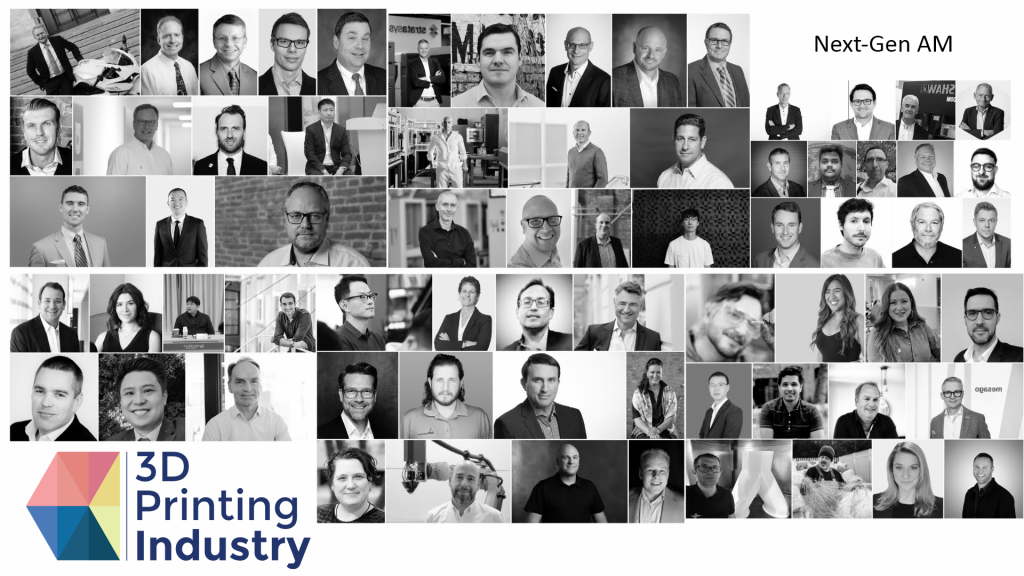What features will the next generation of 3D printers require?
The landscape of industrial manufacturing is witnessing a transformative shift, partly driven by advancements in 3D printing technology. As companies increasingly integrate 3D printing into their production processes, understanding the key features and priorities of machine builders that define the next generation of industrial 3D printers is crucial.
The 3D Printing Industry Executive Survey asked leaders from the additive manufacturing sector to tell us about the most important features of the next generation of 3D printers.
These insights into the industry’s prioritization of 3D printer capabilities offer a glimpse into the future of manufacturing, emphasizing efficiency, flexibility, and sustainability.

The Forefront of Innovation: Productivity and Speed
At the heart of industrial 3D printing’s evolution is the unyielding focus on increased productivity and speed. These aspects are not merely enhancements but foundational pillars that support the integration of 3D printing into mainstream manufacturing. With the highest average importance score, increased productivity stands as the most critical feature. This focus underscores the industry’s need for 3D printers to not only complement but significantly enhance production capabilities, ensuring these systems can meet demands efficiently and effectively.
Closely following productivity, increased speed is identified as the second most crucial feature. The emphasis on speed indicates the ongoing move away from the traditional view of 3D printing as suitable only for prototyping. It signals a shift towards rapid manufacturing, enabling industries to drastically reduce cycle times and achieve faster time-to-market for new products.
Simplifying Complexity: Ease of Use and Lower Material Costs
As industrial 3D printing technologies become more sophisticated, the importance of ease of use, ranked third, highlights a strategic pivot towards user-friendly interfaces and streamlined operation processes. This shift aims to lower the barrier to entry, making 3D printing accessible to a broader range of professionals and, thus, fostering wider adoption across industries.
Parallel to operational simplicity, the prioritization of lower material costs, ranking fourth most important, addresses one of the traditional constraints of 3D printing—material expenses. By focusing on reducing these costs, the industry is making strides toward rendering 3D printing a more economically viable alternative to conventional manufacturing methods, potentially revolutionizing cost structures in manufacturing.
Enhancing Operational Efficiency: Automation and Advanced Monitoring
The importance placed on automation from job-to-job, in fifth place, reflects a move towards minimizing manual intervention and enhancing production flow. This focus on automation is indicative of the industry’s commitment to operational efficiency, aiming to reduce downtime and maintain continuous production workflows.
Advanced process monitoring, ranked at sixth place, further exemplifies the drive towards quality and reliability. Real-time monitoring capabilities are crucial for ensuring that the manufacturing process meets stringent quality standards, allowing for immediate adjustments and reducing waste.
The Road Ahead: Sustainability and Advanced Capabilities
The features with lower importance scores, such as Beam Shaping and Environmental Footprint , while still significant, indicate that the foundational concerns revolve around making 3D printing more accessible, efficient, and cost-effective. Advanced capabilities like Adaptive Process Control and Machine Self-Diagnostics, although rated as less critical, highlight a trend towards smarter, more autonomous systems capable of optimizing their operations and minimizing downtime without human intervention.
These capabilities are set to revolutionize industrial 3D printing by enabling machines to optimize operations, anticipate maintenance needs, and adapt to varying conditions without human intervention.
The path to next-generation additive manufacturing
The prioritization of features in industrial 3D printing paints a picture of an industry at a pivotal juncture, rapidly evolving to meet the demands of modern manufacturing. The emphasis on productivity, speed, and cost-effectiveness, coupled with a forward-looking approach to sustainability and advanced technological capabilities, underscores a clear vision for the future of manufacturing.
It is important to place these results in context. As our 2024 Executive Survey has identified, there is still a remarkable amount of potential waiting to be unlocked in the current generation of systems. Access to this potential, in some cases, is a question resolved best by enhanced software; in other cases, a hardware solution is required.
The next-generation of additive manufacturing systems: What are the most important features?
#1 Increased Productivity
#2 Increased Speed
#3 Ease of Use
#4 Lower Material Costs
#5 Automation from job-to-job
#6 Advanced Process Monitoring
#7 Open Materials
#8 Industry 4.0 integration
#9 Increased Build Volume
#10 Predictive Maintenance
#11 Secure Printing
#12 Multi-material
#13 OEE
#14 Adaptive Process Control
#15 Machine self-diagnostics
#16 Environmental Footprint
#17 Beam Shaping
Want to give you perspective? Get in contact.
Read more in the 2024 3D Printing Industry Executive Survey:
Overcoming barriers to adoption: A comprehensive guide to customer pain points
3D Printing Industry Business and Operating Conditions Forecast
The Next Ten Years: The Future of 3D Printing
Subscribe to the 3D Printing Industry newsletter.
You can also follow us on Twitter, like our Facebook page, and subscribe to the 3D Printing Industry Youtube channel to access more exclusive content.
Are you interested in working in the additive manufacturing industry? Visit 3D Printing Jobs to view a selection of available roles and kickstart your career.



